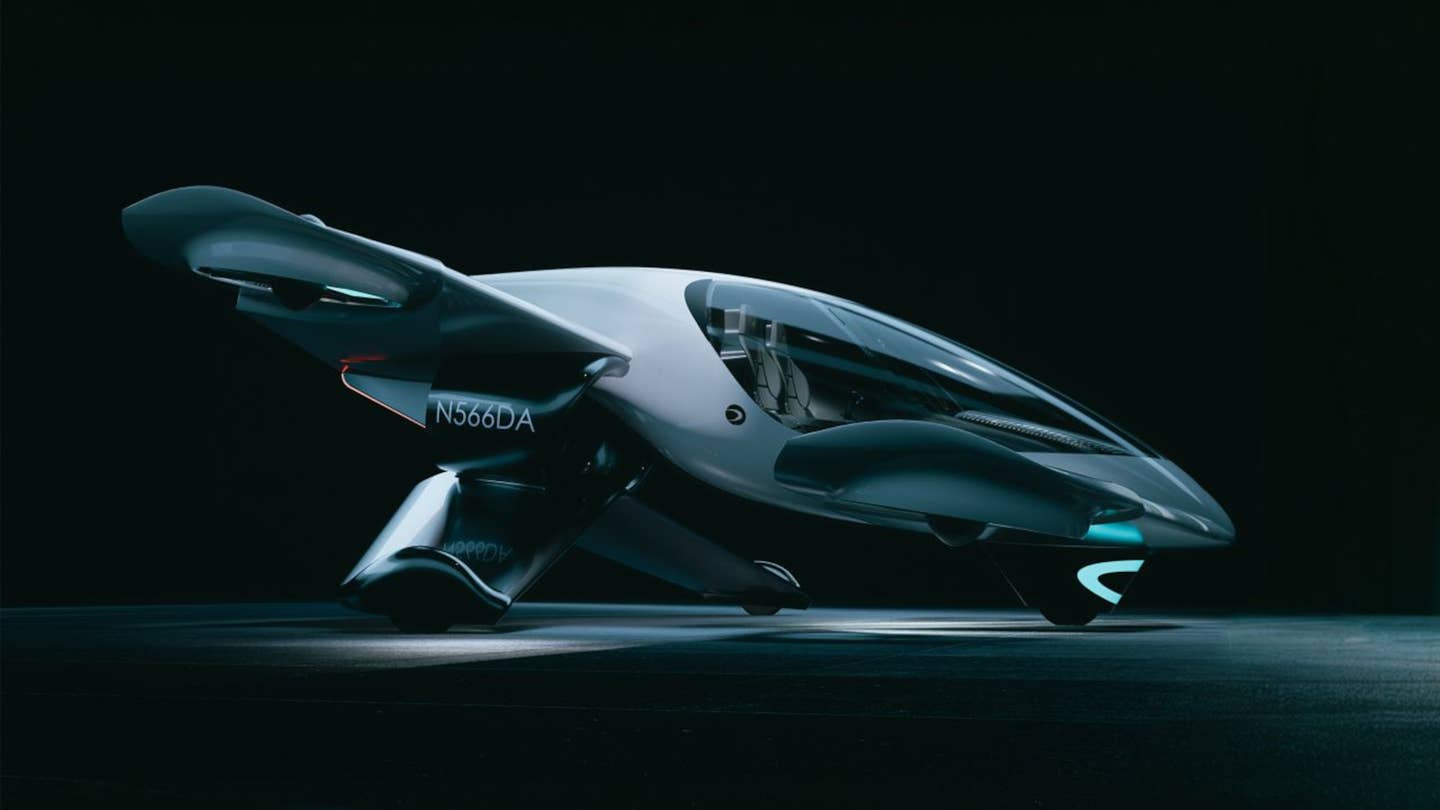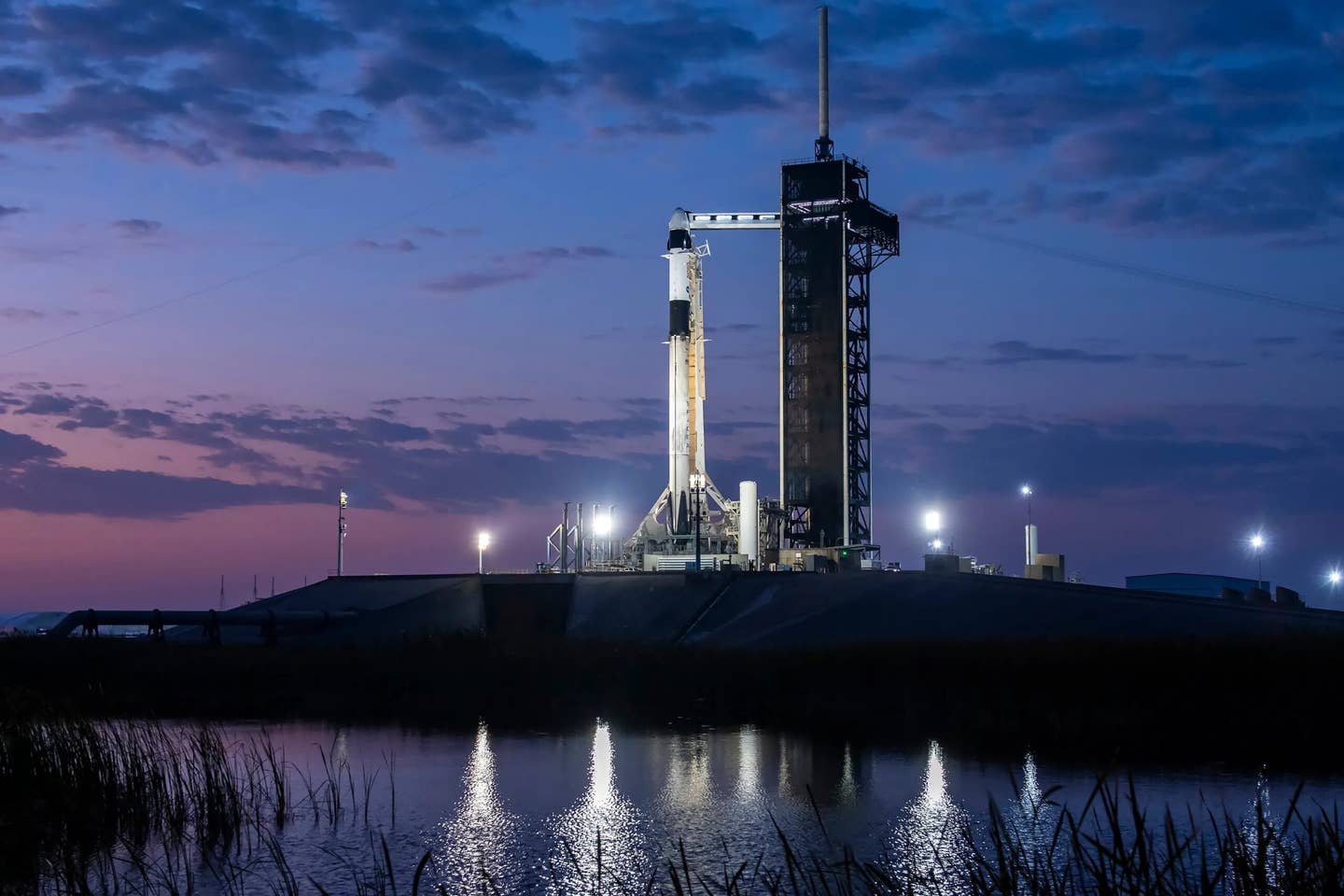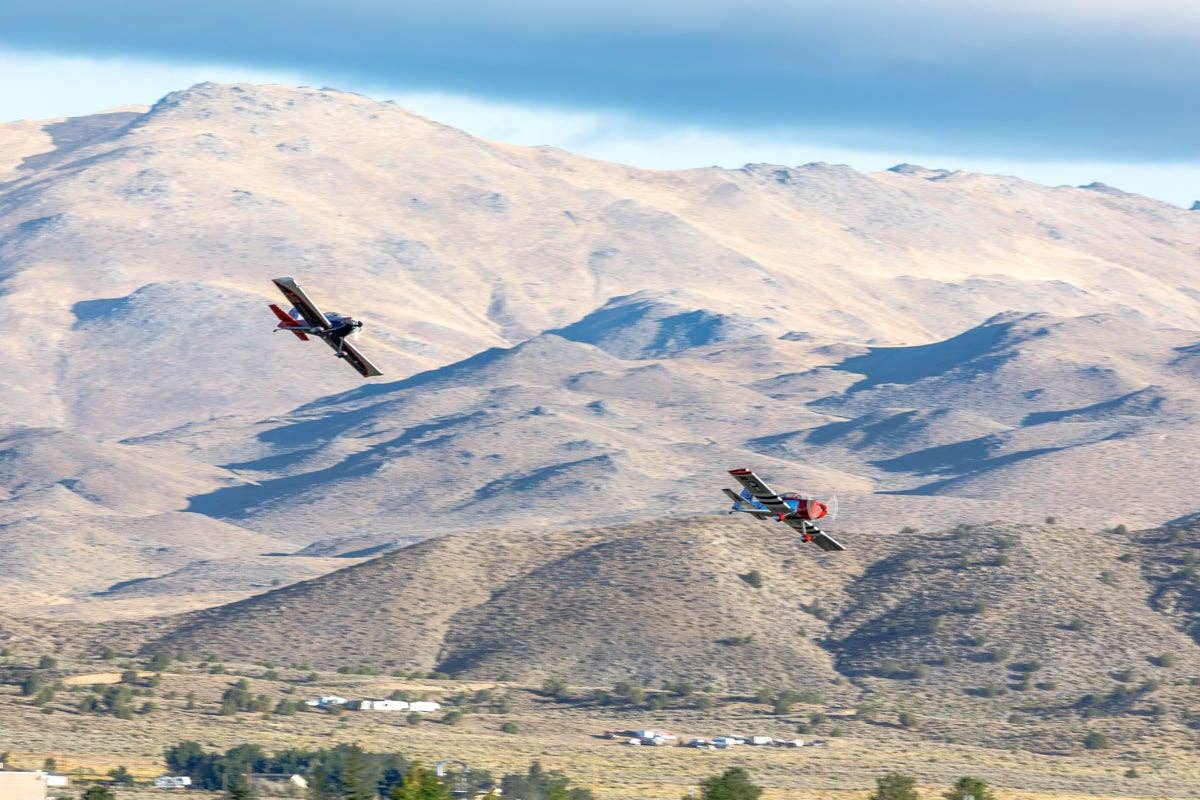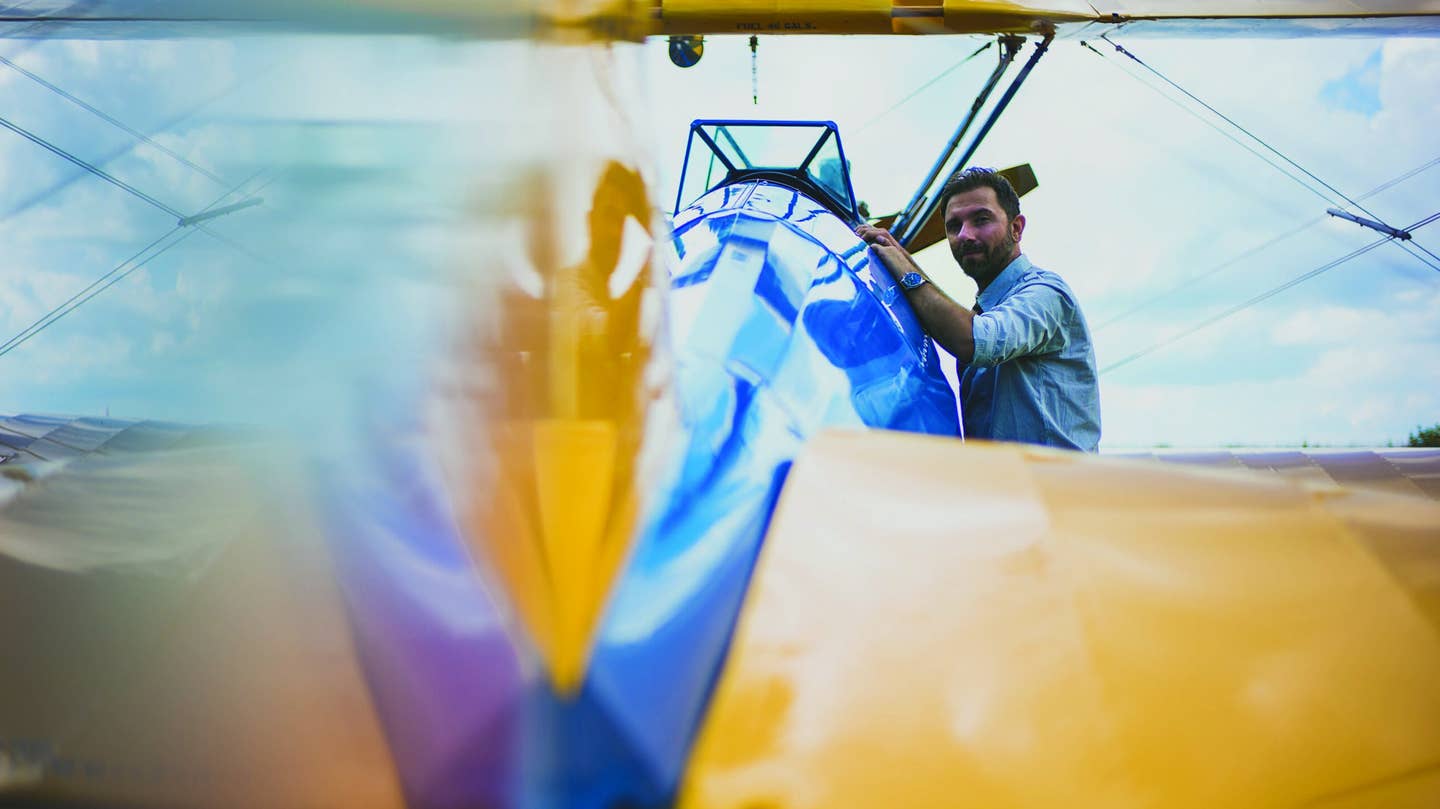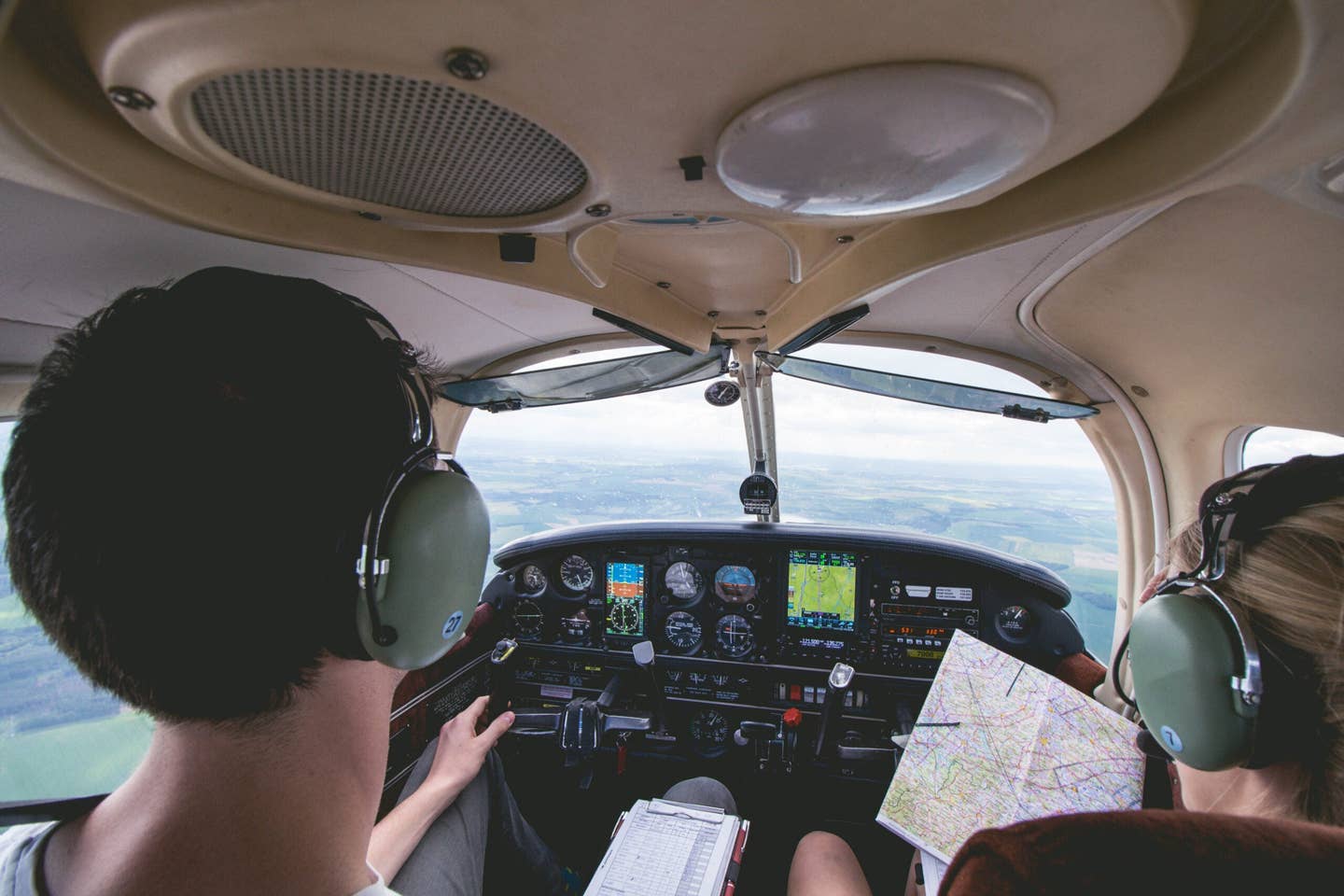Electra Completes First Flight of Hybrid-Electric STOL Design
The journey lasted 23 minutes and covered about 30 miles at 3,200 feet in altitude, taking off from the runway at ‘neighborhood driving’ speeds.
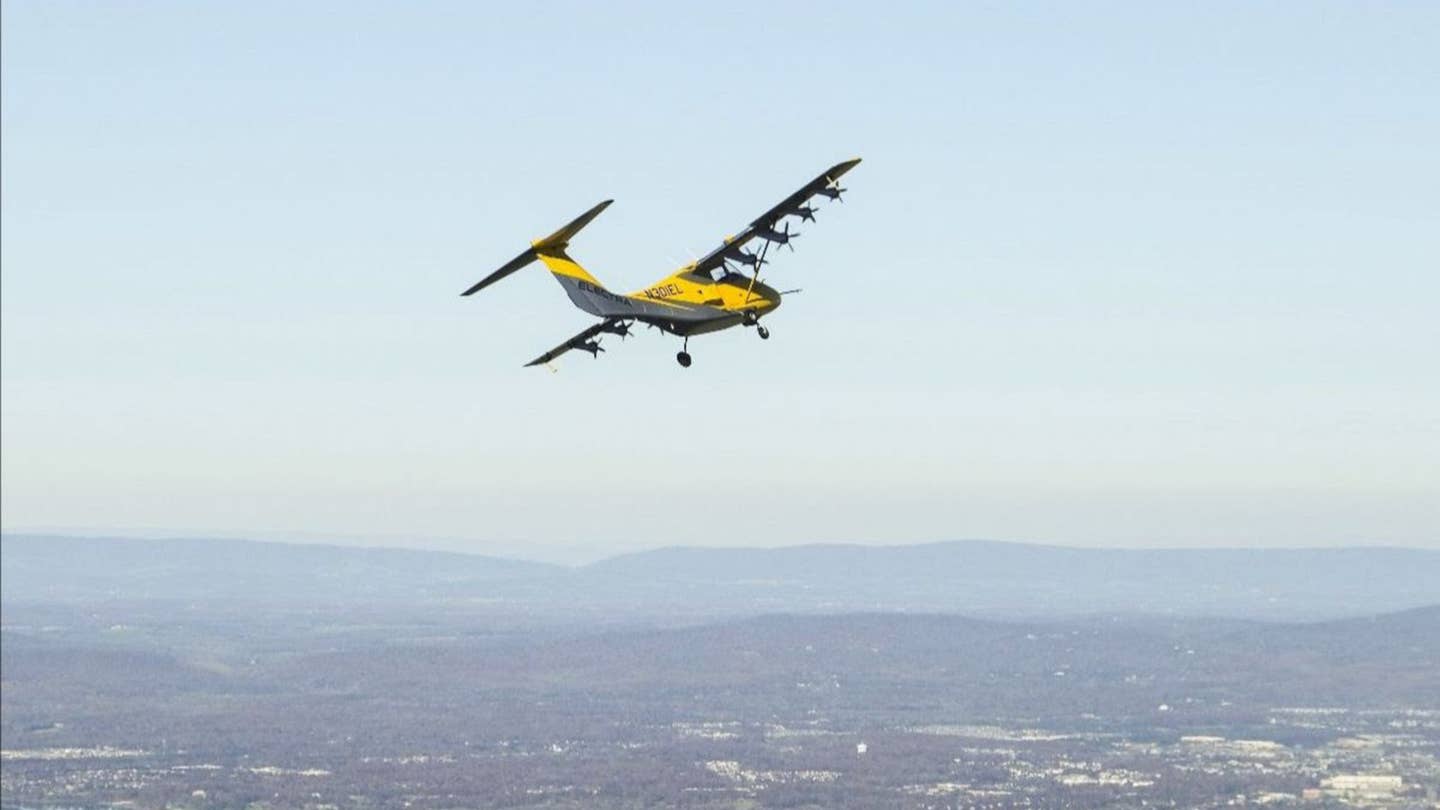
Electra’s Goldfinch eSTOL demonstrator soars over the Virginia countryside, powered by a small turbogenerator and batteries. [Courtesy: Electra.aero]
The American goldfinch is no stranger to U.S. skies: The little yellow creature is the state bird of Iowa, New Jersey, and Washington. But this month in Virginia, a different, much larger species of Goldfinch flew for the first time.
Aircraft manufacturer Electra.aero’s EL-2 Goldfinch demonstrator pays homage to its namesake’s golden hue. Unlike a bird, however, the hybrid-electric ultra-short takeoff and landing (eSTOL) aircraft took off from the runway like a conventional plane once on Nov. 11 and again on Sunday, marking its inaugural flights.
The former was an all-electric test. But Electra said the latter was the eSTOL design's first in hybrid configuration. Both flights were piloted by Cody Allee, chief technology officer of ABSI Aerospace & Defense and a former U.S. Marine Corps pilot, at Manassas Regional Airport (KHEF) in Virginia.
“The first hybrid flight lasted 23 minutes, reached an altitude of 3,200 feet, and covered a distance of approximately 30 miles,” said JP Stewart, vice president and general manager of Electra. “We're looking forward to further expanding the envelope of this aircraft and demonstrating the full capability of Electra's technology.”
Electra said its two-seat Goldfinch demonstrator is the first blown-lift aircraft that uses distributed electric propulsion and a hybrid-electric propulsion system. Blown lift directs slipstream flows back over the wing into large flaps and ailerons. This directs flows downward to “multiply” lift, allowing the eSTOL to take off and land at “neighborhood driving speeds.” By the company’s estimate, the demonstrator needs just 300 feet of runway.
Unlike the tiltrotor design common to electric vertical takeoff and landing (eVTOL) models, Electra’s eSTOL has no hover or transition phase because it relies on fixed wings and rigid propellers. In addition to removing complexity from the design, the fixed-wing architecture gives Goldfinch a path to be certified as a multiengine, Level 3, low-speed airplane under FAR Part 23 and be operated with a standard pilot’s certificate in the airplane category.
The aircraft’s eight electric motors run on a small turbogenerator that uses hybrid-electric power to recharge its batteries. Electra says this reduces emissions (by 30 percent) and noise (75 dBA at 300 feet, equivalent to a vacuum cleaner) below those of traditional airplane or rotorcraft. There’s also the benefit of added range and payload, stemming from Goldfinch’s lack of reliance on ground-based electric chargers and the reduced energy requirements of blown lift.
The Goldfinch demonstrator that flew this month is a predecessor to Electra’s flagship, nine-passenger model for commercial and government customers. That full-scale design is expected to cruise at 175 knots for up to 500 sm (434 nm), while carrying twice the payload (up to 2,500 pounds) of eVTOL designs with the same energy requirements.
Its runway requirement is projected to be even shorter—just 150 feet, half the length of a football field. And all of this comes with the promise of 70 percent lower operating costs than “vertical alternatives.”
“The aim of Electra is to fill a gap in air travel between 50 and 500 miles, where most trips today are made by automobile,” said Electra founder and CEO John Langford. “The key to saving time is to operate close in, which means getting in and out of small spaces quietly and safely, while still being fast enough to cover long distances. Electra will be able to take you from downtown Manhattan not only to Kennedy Airport [KJFK], but to Washington, D.C. It will bring air service to thousands of communities where air travel today is not a practical or affordable option. It also opens vast new opportunities for middle-mile cargo logistics.”
The company so far has a backlog of more than 1,700 preorders of its flagship model from more than 30 customers, which it values at about $6 billion. Customers include Houston-based helicopter provider Bristow Group, airline Ravn Alaska, and Latin American on-demand private aviation platform Flapper. It also has plans to fly in Asia, Australia, and the Middle East.
In addition, Electra is developing a Goldfinch prototype for the U.S. Air Force under a contract with AFWERX, the department’s innovation arm. The agreement, worth up to $85 million, will see Air Force pilots take the aircraft out for testing and validation of operational use cases.
The Air Force has been a valuable partner for Electra, which as of August had six active Small Business Innovation Research (SBIR) and Small Business Technology Transfer (SBTT) Phase II and III contracts. Those agreements have allowed it to mature Goldfinch’s blown-lift aerodynamics, hybrid-electric powertrains, flight controls, and other features.
In addition to passenger transport, on-demand urban air mobility services, and defense applications, Electra expects Goldfinch to handle cargo logistics, executive transport, humanitarian aid, disaster response, and a variety of other use cases.
While the full-scale Goldfinch’s FAA certification isn’t expected until 2028, Sunday’s test flight was a promising development for Electra as it seeks to establish a new mode of regional transportation.
Like this story? We think you'll also like the Future of FLYING newsletter sent every Thursday afternoon. Sign up now.

Sign-up for newsletters & special offers!
Get the latest FLYING stories & special offers delivered directly to your inbox

